From Virginia to Yellowstone: 7 Places to See Bison Across the US
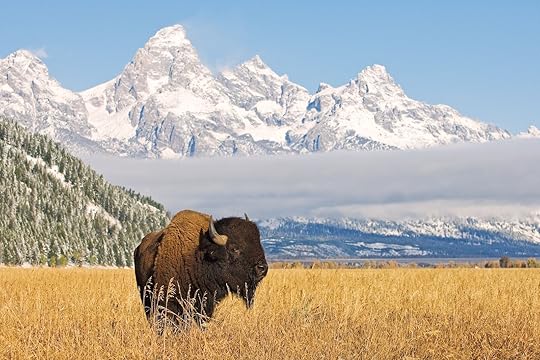
Aside from bald eagles, perhaps no species is more closely associated with the United States than bison. Once pushed to the edge of extinction by western settlers, bison are once again thriving and traversing a range of American landscapes. That’s perhaps why July is designated as “National Bison Month” by the National Bison Association, set aside as a time to celebrate the country’s national mammal, promote bison conservation, and encourage public awareness and engagement through events and educational programs. In July, many parks, farms, and conservation projects host events, educational programming, and volunteer opportunities that celebrate the bison’s environmental and cultural revival.
To celebrate National Bison Month, there’s no need to travel to the prairies of the American West to see a bison (though that’s certainly an option). Bison today can be found from Virginia to Texas, both in the wild and as cared-for farm animals. Whether joining a dawn photography tour in Grand Teton National Park, hiking in Utah, or glamping on a working Virginia ranch, July is the perfect time not just to travel, but to recognize the importance of protecting America’s natural and cultural treasures, like bison. Here are some of the best bison-related experiences to have in the US this month and beyond.
Pro tip: Always stay at least 25 yards away from wild bison. Even though they’re slow moving, they’re still wild animals. Bison always have the right of way on trails, roads, and parking areas.
View this post on InstagramA post shared by Suzie Dundas (@hikeupyourskirt)
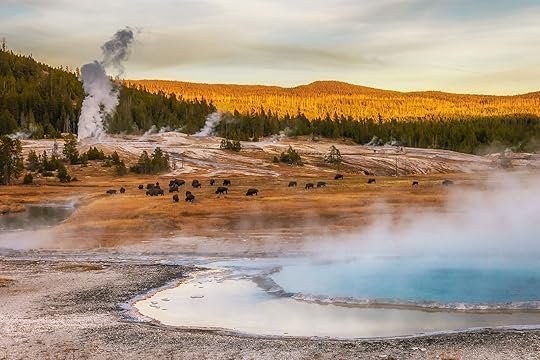
Photo: Cheryl Ramalho/Shutterstock
Yellowstone National Park is home to the largest and most genetically pure wild bison herd in the United States. Bison have roamed Yellowstone’s landscape continuously since prehistoric times, surviving the near-extinction that befell their species in the late 1800s thanks to the influx of settlers. By 1902, only about two dozen bison remained in the park, protected from poaching by the US Army (whose historic base still stands today). To boost the population, 21 bison from private herds were introduced, and over time, these animals mixed with the survivors, forming the foundation of today’s thriving herds.
Today, Yellowstone’s bison are split into two main groups: the northern herd of the Lamar Valley, and the central herd in the Hayden Valley. Both valleys are great places to witness bison in their natural habitat, though Tower-Roosevelt and the areas around Old Faithful also provide excellent viewing, especially at dawn or dusk when the animals are most active. That said, there are around 5,000 bison currently in the park, so you’re likely to see them just about anywhere, though they sometimes stay away from the super-high trafficked areas, like the Old Faithful geyser.
Glamp on a working bison farm in Virginia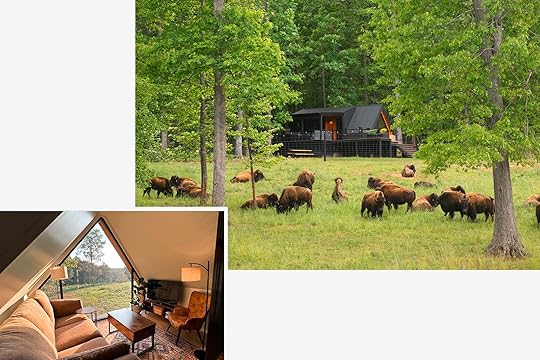
Photos: Cibola Farms
At Virginia Bison Company, also known as Cibola Farms, guests can go glamping on the 300-acre working bison ranch. It has three cabins available for rent on Airbnb, each with indoor and outdoor living space, plus big windows looking onto the farm. The cabins are just a 90-minute drive from Washington, DC, and are close to Shenandoah National Park, making them a unique and scenic add-on to any mid-Atlantic trip.
During the day, when you’re not soaking up the peaceful atmosphere, you can explore the working bison farm. There’s a self-guided tour that starts at the farm market: Just show up, and the staff will point you in the direction of where the bison are grazing that day (if you haven’t already seen them from the front porch of your cabin, that is).
Cibola Farms is about 90 minutes from DC and 45 minutes from Shenandoah National Park, making it an easy, quirky add-on to any mid-Atlantic trip.
Take a jeep safari tour at Custer State Park Resort’s Bison Center in South Dakota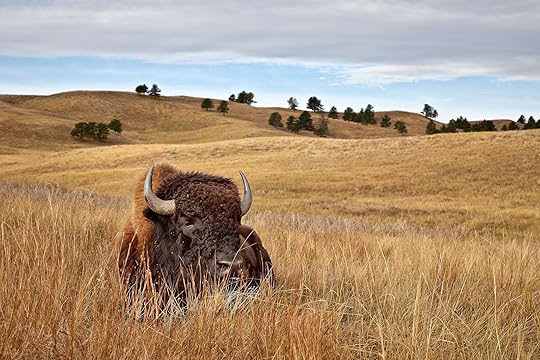
Photo: Robert Harding Video/Shutterstock
Custer State Park in South Dakota is home to one of the largest publicly owned bison herds in the world, with nearly 1,400 free-roaming bison thriving across its 71,000 acres. The herd traces its origins back to 1914, when 36 bison were purchased to establish a sustainable population. Since then, the herd has flourished, and today, visitors can take buffalo safari Jeep tours at Custer State Park Resort, giving them access to the park’s private interior roads only open to guests on tours. The open-air tours run daily from May through October, lasting about 1.5 to 2 hours. Visitors get to go off-road to track not just bison, but pronghorn and elk, too. It’s also possible to do self-guided tours along the park’s Wildlife Loop Road, though bison crossings can lead to frequent backups.
Mountain bike past bison at the American Prairie Reserve in Montana
Photos: Dennis Lingohr and Reid Morth for American Prairie
The American Prairie Reserve in northeastern Montana is an ambitious conservation project aiming to restore a vast swath of the Northern Great Plains to something approaching its pre-settlement biodiversity (and scale, with plans to manage more than 3.2 million acres). Central to the mission is the reestablishment of a free-roaming, genetically robust bison herd, now numbering approximately 900 animals. American Prairie’s bison are critical both ecologically and culturally. They’re a keystone species that shape the grasslands, and a vital tool in working with tribal nations to revitalize Native heritage.
Visitors to the Reserve will encounter a landscape where bison roam across fenced pastures, often visible from hiking trails, backcountry roads, and designated viewing areas. Available activities include hiking, mountain biking, horseback riding, wildlife photography, and self-guided driving tours. Buffalo Camp and other remote campgrounds are an ideal base for stargazing or bird watching, and the National Discovery Center (in Lewistown, Montana) has interactive exhibits and more information about the prairie ecosystem.
See bison while hiking in Antelope Island State Park in Utah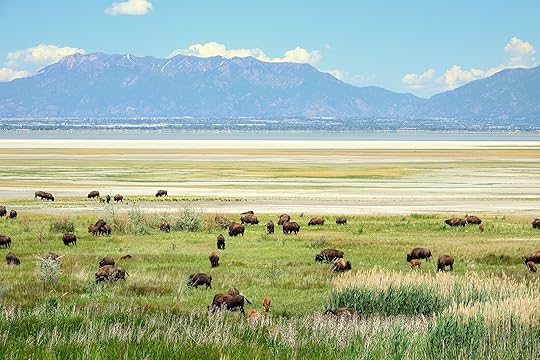
Photo: Ian Dewar Photography/Shutterstock
Antelope Island State Park near Great Salt Lake is one of the best places in the US to potentially see bison on foot. The island’s herd is between 550 and 700 animals and has roamed the park’s grasslands since 1893, when a group of ranchers introduced a dozen bison to the island in an effort to help preserve the species. Today, one of the best ways to see them is by hiking trails like Buffalo Point or the longer Frary Peak route. Both wind through rolling hills and open rangeland where roaming bison are frequent sights. While the sight of bison against the island’s stark landscape is unforgettable, visitors are strongly advised to keep a safe distance, as bison are unpredictable and can be dangerous if approached. Early morning and late afternoon hikes are ideal for wildlife viewing, and bison always have the right of way on trails.
Walk with Indigenous women working to return bison to tribal lands in Texas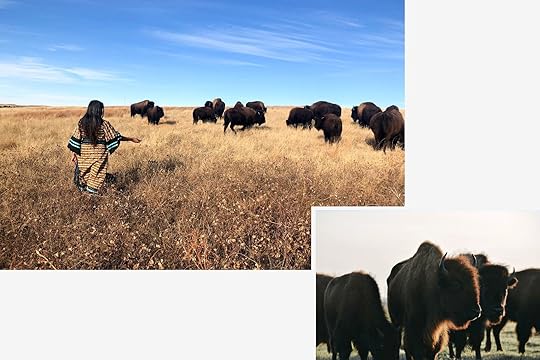
Photos: Texas Tribal Buffalo Project
The Texas Tribal Buffalo Project offers guided ranch tours near San Antonio, where visitors can meet a herd of bison and learn how Native women are leading efforts to redevelop Indigenous relationships with land and food. The center was founded by Lipan Apache author and activist Margo Tamez and the project focuses on what it calls “buffalo rematriation”—returning bison to tribal land under the leadership of women, in contrast to male-dominated conservation models.
Tours are led by Tamez or other members of the community and include a visit to the pasture, where guests can observe the animals and hear stories about their cultural and ecological significance. Discussions during tours cover topics like Indigenous food sovereignty, women’s roles in decolonization, and the challenges of restoring buffalo habitat, especially in Texas.
Tours must be booked at least two weeks in advance and are open to individuals or larger groups. They last about 90 minutes and are done entirely on foot, so wear good walking shoes you don’t mind getting a little dirty.
Take an early morning photo tour though Grand Teton National Park in Wyoming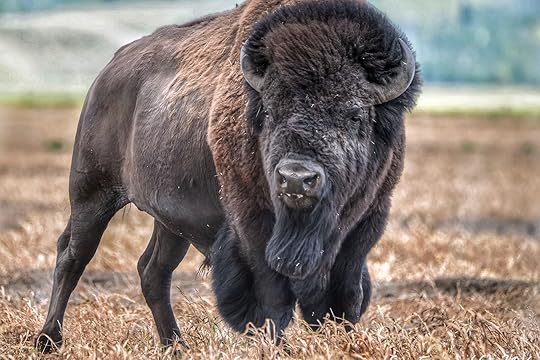
Photo: Sue Ernisse / BrushBuck Wildlife Tours
BrushBuck’s Grand Teton Dawn or Dusk Tour is a four-hour guided drive through wildlife corridors in Grand Teton National Park, with a strong chance of encountering American bison. The tour is timed to coincide with peak animal activity, as cooler temperatures tend to bring large mammals into the open. You might see bison grazing in open meadows or along the Snake River, especially in the early morning when herds are moving on for the day.
BrushBuck Guides have high-powered spotting scopes and binoculars to help guests find wildlife and watch them from a reasonable distance, and the open air-vehicles (in warmer weather) ensure you can see animals from the vehicle. While other species like elk, moose, or bears may also be visible, bison sightings are one of the most consistent draws, especially in summer and fall. Tours depart from Jackson and run year-round, weather permitting. 
Matador Network's Blog
- Matador Network's profile
- 6 followers



